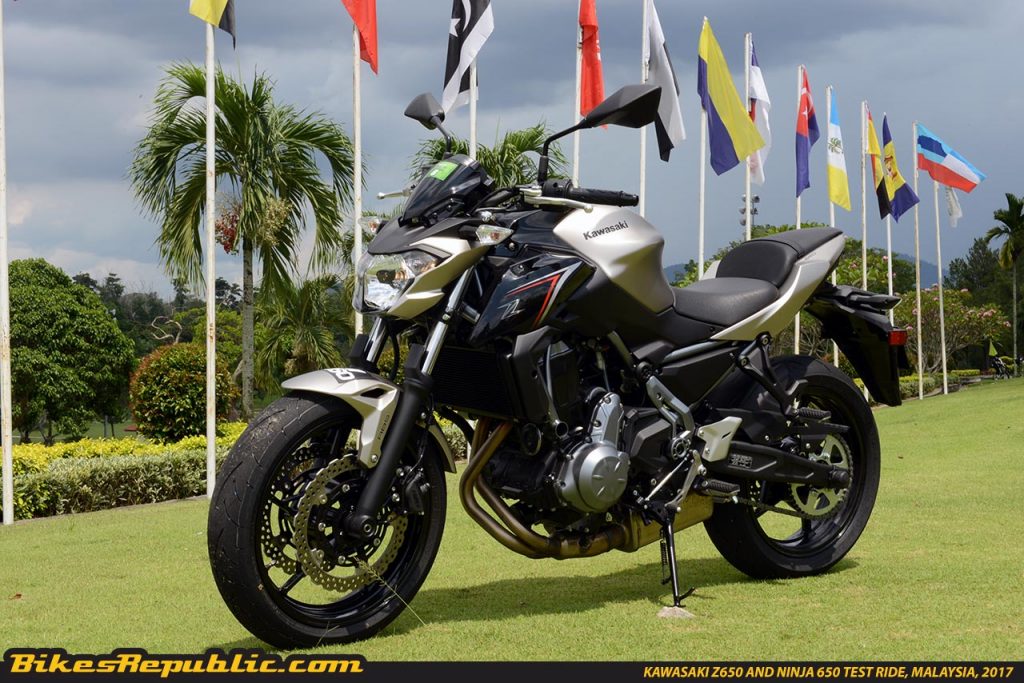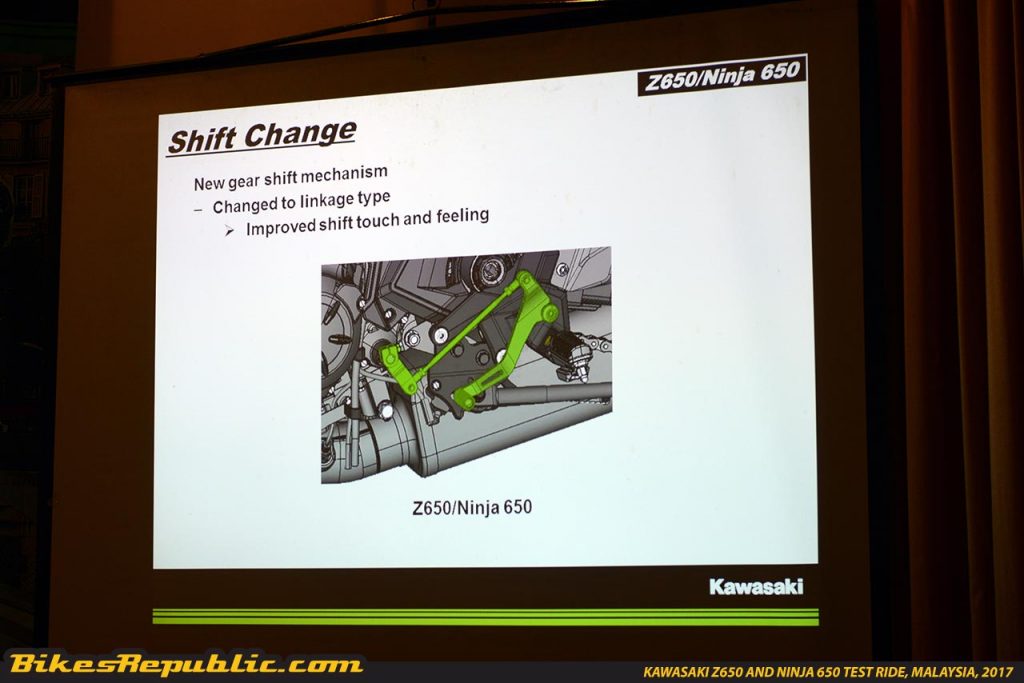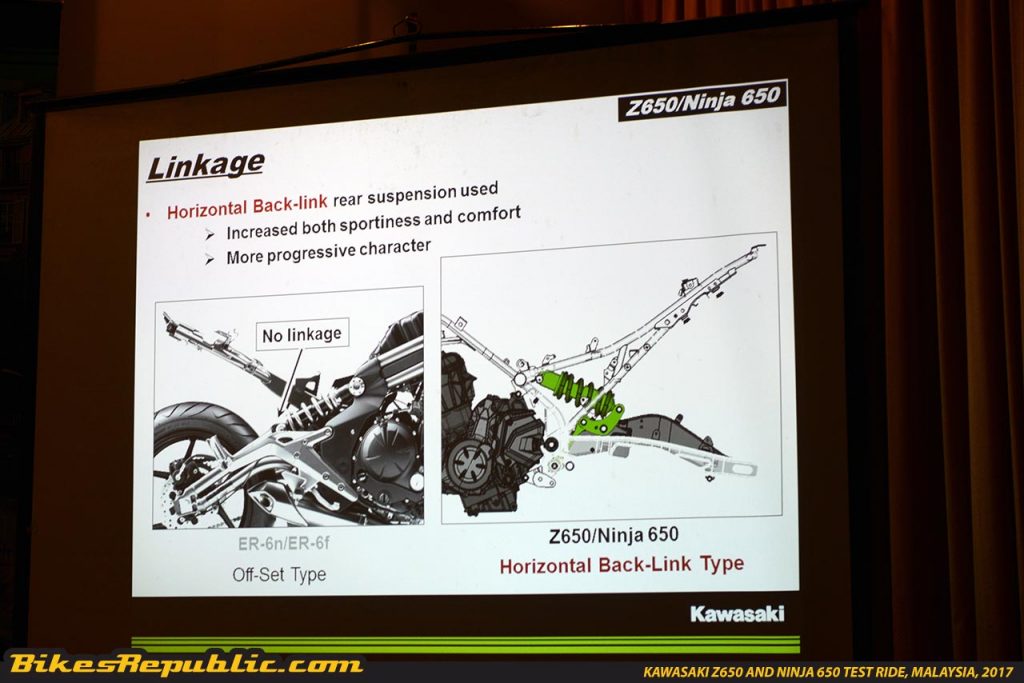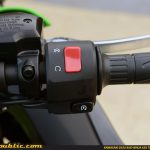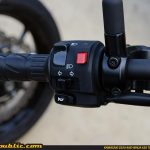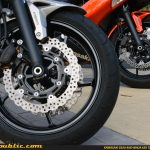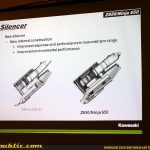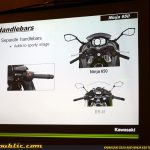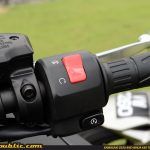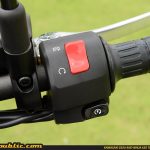- The Z650 and the Ninja 650 are almost all-new and are the replacement models to the popular ER6N and the ER6F.
- The Z650 is 17kg’s lighter than the ER6N and the Ninja 650 is 16kg’s lighter than the ER6F.
- The 649cc, four-stroke, parallel twin engine is liquid cooled and produces 65hp and 65.7Nm of torque on both bikes.
- Both bikes now offer ABS as standard via the latest Bosch 9.1M unit which is small and compact and tactfully placed under the seat because of its compact size.
- The Z650 is priced at RM35,609 inclusive of GST, while the Ninja 650 is priced at RM37,189 with GST as well.
It was an interesting day yesterday as we got to test ride two new Kawasaki motorcycles which were first introduced to Malaysians back in January.
The Z650 and the Ninja 650 are almost all-new and are the replacement models to the popular ER6N and the ER6F, both of which were considered to be entry level models to the wonderful world of Kawasaki middleweight superbikes.
So, both the Z and the Ninja may be considered as entry level models, but there is nothing “entry-level” about them.
The test ride route organised by Kawasaki Malaysia began in Nilai and went on to Morib then to Jenjarum through some old country roads. A total distance of about 200 kilometers was good enough for an initial impression of both bikes, and though the Ninja was my personal favourite, the Z was incredibly impressive too.
The size of the Z has somewhat shrunk from the ER6N, in fact it almost feels like a slightly bigger version of the Z250, and it is a lot lighter too, than the ER6N that is.
Shorter riders will appreciate the lower seat height, which is now 15mm lower, as well as the slimmer seat which is designed to help vertically challenged riders to keep their feet flat on the road. Personally, my six foot frame would have preferred a taller seat height as I found both the Z650 and the Ninja 650 a bit cramped for my height. But then again, I am an abnormally in a market where shorter riders make up the majority.
Both bikes are a lot lighter too thanks to the usage of some advanced materials. The Z650 is 17kg’s lighter than the ER6N and the Ninja 650 is 16kg’s lighter than the ER6F. This may not seem like a lot, but you really do feel the difference as soon as you sit on the bike and pick it off its stand. The dramatic weight reduction was achieved through a number of upgrades including an all-new trellis frame which at 15kg’s, is a full 10kg’s lighter than the old frame. And because the new frame allows the engine to function as a stressed member through three rigid mounts, thus contributing to the lightweight feel of the bike, making it easier to put it into a corner and picking it back up again on the exit. Then there is the new rear swing-arm which is now of a gull-arm style and is 2.7kg’s lighters thanks to advanced construction methods.
The engine too has been upgraded and is the best part of both bikes. The 649cc, four-stroke, parallel twin engine is liquid cooled and produces 65hp and 65.7Nm of torque on both bikes. It features a number of updates like the cylinder heads which have been redesigned as have the camshaft profiles which now feature a reduced operating angle and overlap. What this gives you is improved response and more power in the lower and middle part of the rev band. An improvement that we could feel right away – there was more torque which means you do not have to spend precious time downshifting everytime you want to accelerate. In fact, the Ninja 650 feels a lot better because it has a bigger fuel injector with an opening that is 2mm bigger than that on the Z650. Same amount of power and torque, just more accessible lower down the rev band. Also handy through traffic where you can just hold the throttle without having to constantly shift gears.
Both bikes also come with a new slipper clutch with an assist function. What this means is that you get a lighter clutch feel and the rear wheel will not lock and hop during quick downshifts; improving safety and cornering stability. It’s also a lot easier to move off even from a hill start, you have to try really hard to kill the engine during roll out. Also assisting gear shifts is a new gear shift mechanism which has been changed to a link type set up (see below_. With this, you only need to gently tap the shifter for an up or downshift. Particularly useful for clutchless upshifts.
On the move, the first thing you notice about the bikes is the impressive amount of grunt and the linear acceleration with no loss of power. The powerplant is obviously the best part about both the new bikes, absolutely no complaints there. In fact, besides the smaller size of both motorcycles, there really are no complaints. But the suspension could do with a re-tuning once you have bought it. Especially the rear as I found it to be a little too soft. The rear suspension has been updated over the old bike and now uses a horizontal back-link which helps increase sportiness and comfort, but I found it to be too focused on comfort and would dip too much on uneven roads. But it is adjustable for preload, so just a few clicks of the horizontally mounted mono shock should fix that.

Of course there are other updates as well, like the new front brake callipers, brake pads and rotor carriers. Both bikes now offer ABS as standard via the latest Bosch 9.1M unit which is small and compact and tactfully placed under the seat because of its compact size. The fuel tank too has been redesigned an placed lower down the chassis for a more sportier look and feel. Then there is the new instrument panel that now comes with a gear position and shift indicator, three-selectable display modes and also tells you the temperature of the coolant as well.

Both bikes are now more relaxed to sit on as well. The handle bars on the Z650 for example have been placed 10mm forward and 15mm lower, this reduces the bodyweight on your wrists. The handlebars on the Ninja on the other hand are all new and have been placed 25mm forward and 42mm lower. I personally love the sitting position on the Ninja 650, it perhaps has the best sitting position in its class.
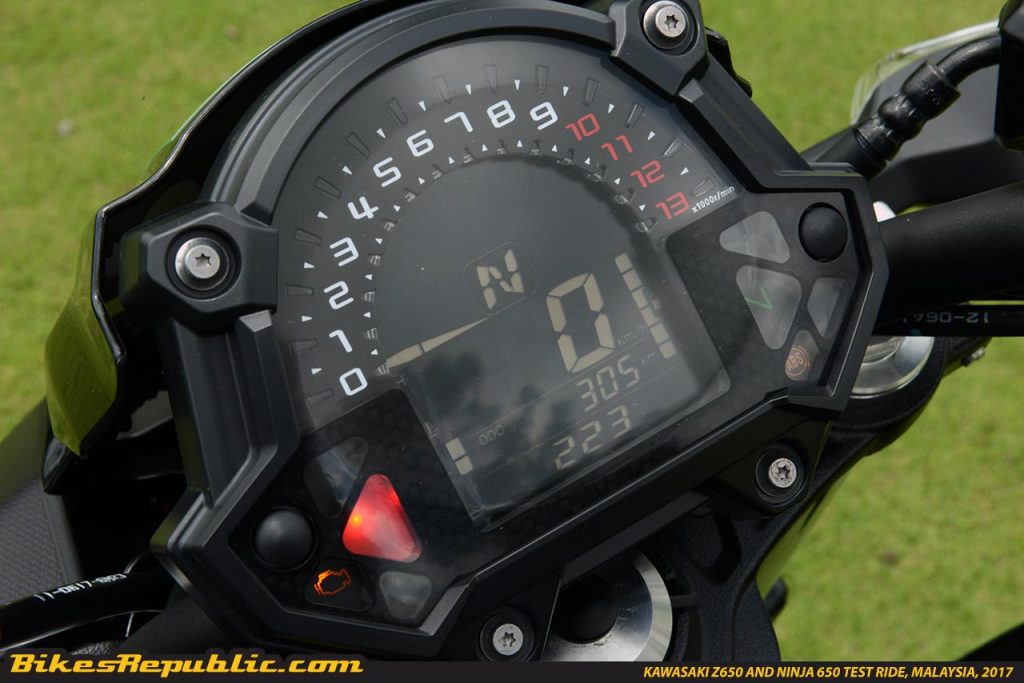
The difference between both bikes is limited to the overall weight, the Ninja is 6kg’s heavier than the Z. So if you have to chose one bike between these two, either way you will be making a really good decision. The slim and compact size of the Z650 will be perfect for city use, the nimbleness will definitely come alive in traffic. The Ninja 650 too will be perfect in urban areas, but can double-up as a weekend warrior for those who like to get your knee down.

We will be picking up both bikes at a later date for a more thorough review and will reserve further judgement until we have spent more time with them. The Z650 is priced at RM35,609 inclusive of GST, while the Ninja 650 is priced at RM37,189 with GST as well.








